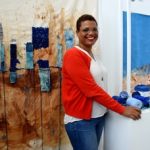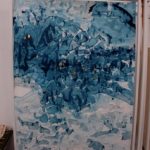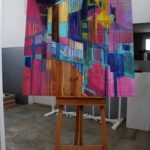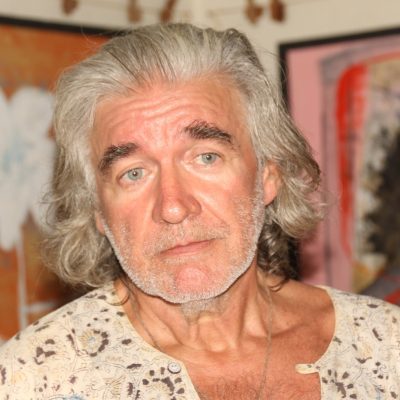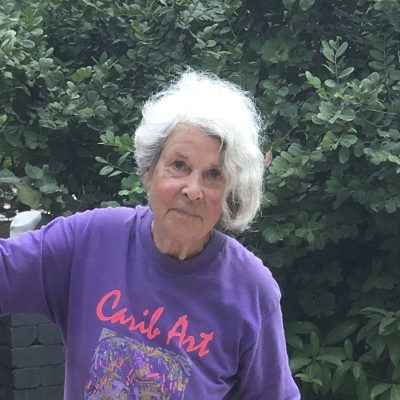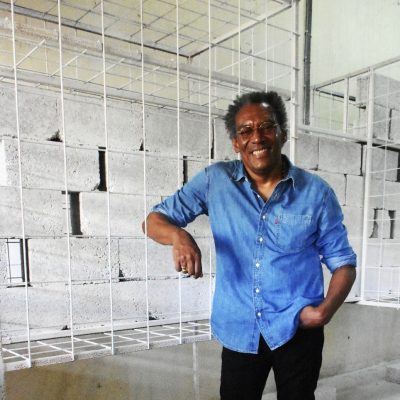Written by Josée Thissen-Rojer
The current COVID-19 pandemic has shaken up everyone’s daily lives to some extent, and things are no different in the visual arts sector. In this series, we visit local visual artists and ask what changes they’ve experienced and how they’re dealing with the situation. This time, we’re in Ailsa Anastatia’s studio.
Ailsa Anastatia (Curaçao, 1978) is a visual artist, trained at the Academy of Visual Education in Tilburg and at the Amsterdam School of the Arts. Her work can frequently be seen at group exhibitions and events. She’s been back in Curaçao since 2005 and within the art world she’s known for her special installations, which are subdued but have a special aesthetic effect.
To express her ideas, she uses various materials and works with large quantities, in which each component is unique. By grouping, stacking, and sequencing, she creates a cadence that leads to wonder. Sometimes she works small and modestly, and other times she fills the space. Yet it’s always clear that even the smallest piece is used and placed very consciously. Her work is intriguing, but it’s more than just a beautiful image because it offers room for contemplation. Her working methods are recognizable in her sculptures and two-dimensional works, as well as in the structure of her exhibitions.
Ailsa uses a variety of materials such as wood, glass, earth, wool, and existing objects. The important thing is that it fits the idea or message she wants to portray at that moment. Because she uses materials in an original way, it’s as if it changes their properties. She applies fabric paint to make it look like she used watercolor paint. Lines in her work are not painted but embroidered with yarn. The cement looks like pottery. It’s only when you study the work more closely that you notice that you have been unknowingly ‘tricked’ by the sophistication of her technique.
In 2019, she presents a solo exhibition in the former chapel of Huize Scherpenheuvel, entitled ‘Fragments of an Unfolding Journey’. It’s a strong statement, in which Ailsa displays her visual language in a fascinating way. There’s also a new development happening in her oeuvre. In contrast to previous exhibitions, where the focus was on architecture and space, she now uses the environment as a starting point. She increasingly steps away from the straight, clean lines of her architectural period and explores the irregular, more organic lines, which are short and whimsical.
The work ‘Where the water touches the earth’ is a four-part work, measuring 2 by 6.5 meters. Four large sheets of paper hang in a tight framework that was especially made for it. The coastline and the surf are depicted in an abstracted form on the four sheets. Because the paper is only attached at the top, the sheets move up and down gently, which provides an extra dimension to the work. One part of this four-panel piece still hangs in her studio, and that’s the part where the sea is depicted. The movement of the water is captured in small blue fragments, outlined with pastel chalk. The fragments vary in size. Scattered over the middle part, one area is covered in gold leaf. It clearly shows how Ailsa concentrates the focus of this work in the center of the canvas and releases it in a very controlled manner towards the bottom and top. Even without the other three parts, this piece remains captivating.


